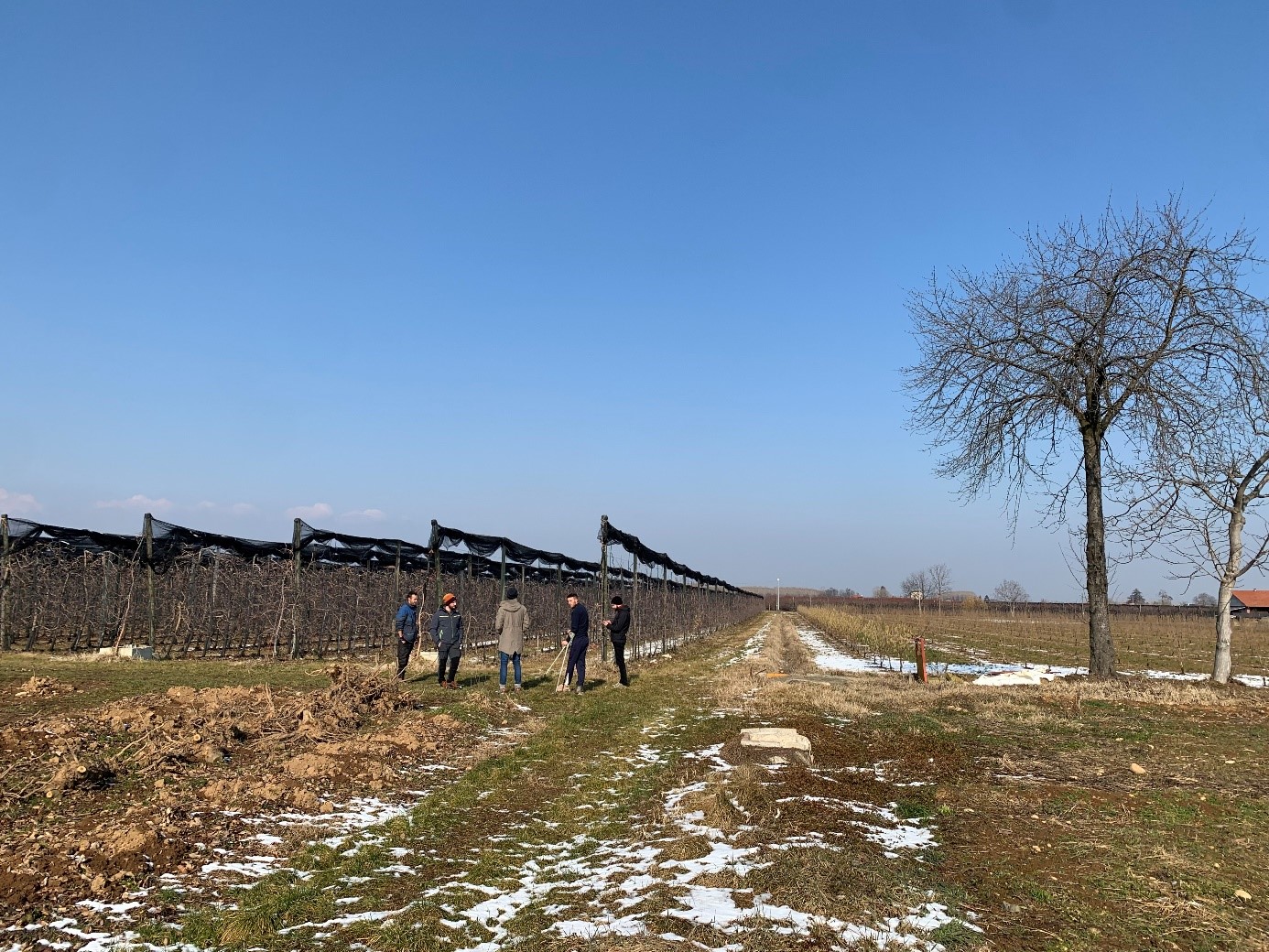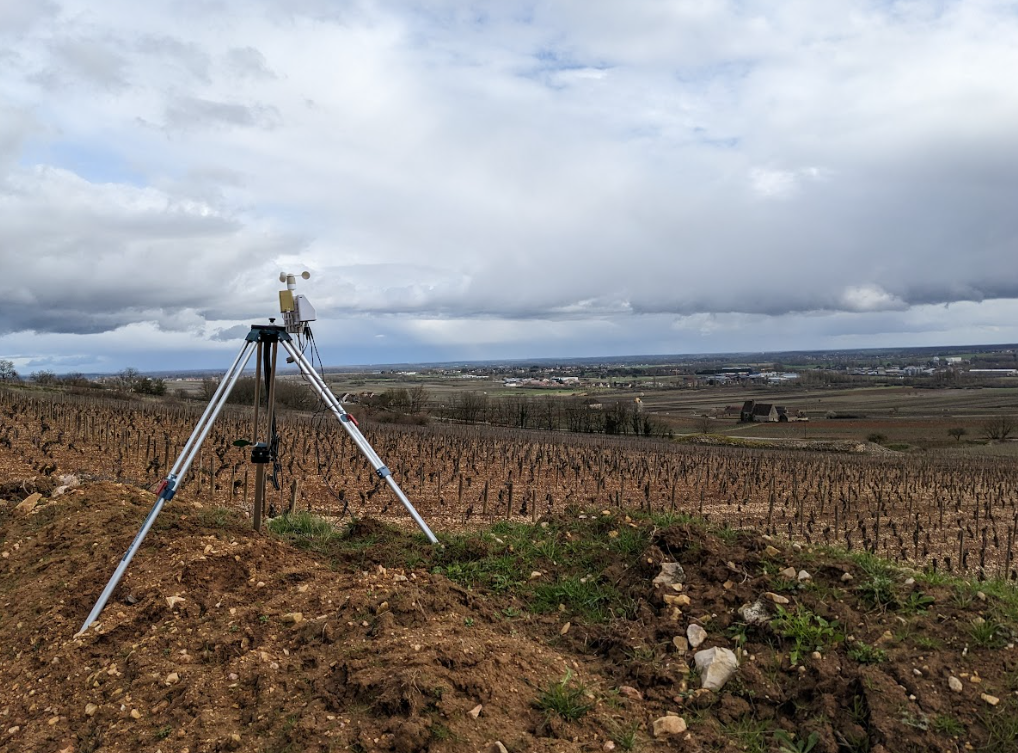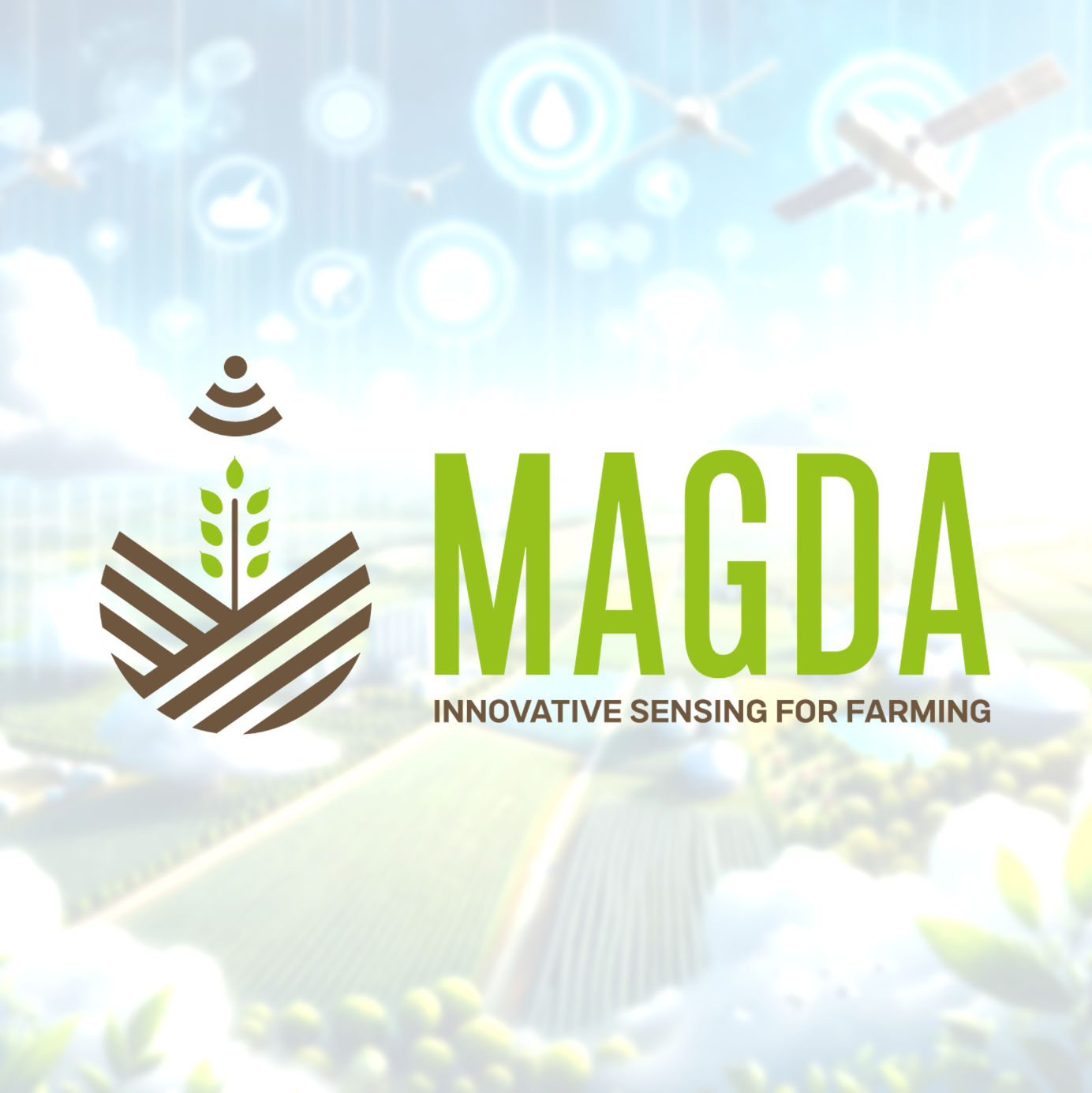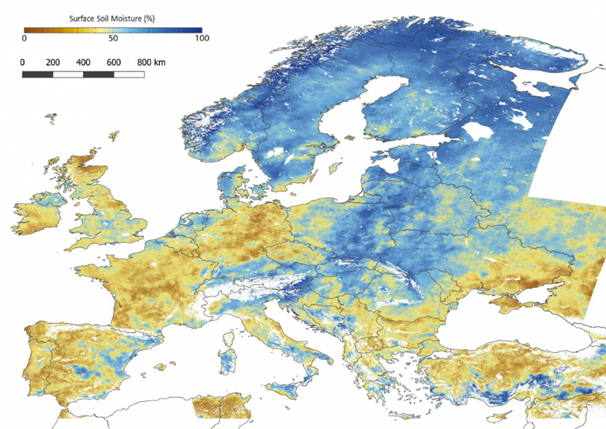
Soil moisture as Essential Climate Variable
Thumbnail image source: Surface Soil Moisture, Copernicus Service (Copernicus, 2020)
Soil moisture, declared as one of the Essential Climate Variables (EVC) in 2010, plays a vital role in regulating the exchange of water, energy, and carbon cycles between land and atmosphere. Remote sensing techniques such as microwave and optical sensors are being used to monitor its distribution over large areas at a lower cost and time.
Soil moisture has been recognized as one of the EVC due to its crucial role in the exchange of water, energy, and carbon cycles between the land and atmosphere. Techniques for monitoring soil moisture include in-situ sensors and remote sensing technologies, with the latter allowing for monitoring over large areas at lower cost and time. The Copernicus programme is a leader in this area, providing surface soil moisture and soil water index products derived from passive and active microwave sensors that can be assimilated into weather and hydrological models to provide severe weather alerts and irrigation advisory.
Soil moisture has been declared in 2010 as one of the EVC, having an important role in Earth’s climate as it controls the exchange of water, energy and carbon cycles between the land and atmosphere. Hence, the soil moisture is an important variable in meteorology, hydrology, agronomy, water resources or climate change. It contributes regulating the rate of plant transpiration and soil evaporation, which affects the near surface air-temperature, humidity and atmospheric water vapour (Dente, 2016). As a result, variations in soil moisture affect the formation of clouds, precipitation, temperature, and atmospheric circulation (Figure 1).
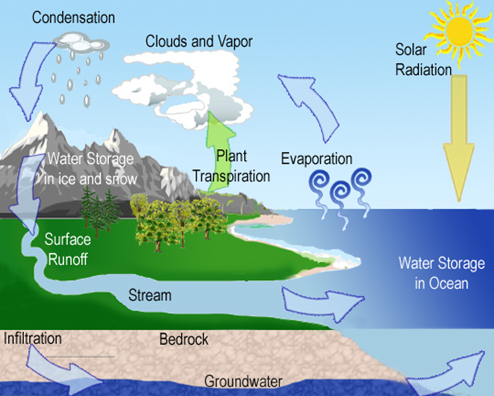
Figure 1 Water cycle (source: https://www.rmbel.info/primer)
The subsequent sections provide a comprehensive overview of the various techniques employed in the monitoring of soil moisture.
Soil moisture in-situ sensors
Numerous in-situ techniques for monitoring soil moisture were developed in the last decades. The most common types of soil moisture sensors include tensiometer, capacitance, dielectric method, gypsum blocks, and neutron probes. These sensors present the advantage to provide high accuracy but they are limited to small surfaces (Figure 2 a-b), while most of the environmental studies require soil moisture distribution over larger areas.
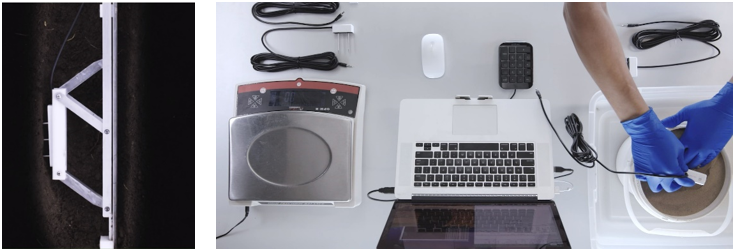
Figures 2a) Soil moisture sensors field installation (Meter Teros 11); 2b) Soil moisture calibration (Meter Teros 11)
Soil moisture remote sensing
The current satellite remote sensing technologies allow the monitoring of soil moisture over large areas at a lower cost and time. The European Union’s Space programme – Copernicus- is a leader in this area. It is implemented in partnership with the Member States, the European Space Agency (ESA), the European Organisation for the Exploitation of Meteorological Satellites (EUMETSAT), the European Centre for Medium-Range Weather Forecasts (ECMWF), EU Agencies and Mercator Océan.
According to Copernicus Programme there are three types of sensors installed on the board of the ESA satellites that can be used for soil moisture estimations (Copernicus, 2020):
-multispectral sensors acquire information from visible, near- near-infrared, shortwave infrared, and thermal infrared portions of the electromagnetic spectrum. Soil moisture estimates are indirect derived using empirical spectral vegetation index.
-optical sensors acquire information from thermal spectrum, identifying temperature differences. These sensors allow an estimation with fine spatial accuracy and reasonable temporal resolution. The main drawbacks are related to the cloud contamination and ability to estimate only top surface soil moisture induced by the reduced surface penetration.
-microwave sensors are based on the principle that the dielectric properties of soil-water mixture strongly affect the soil scattering and emission in this frequency range. The main advantage of microwave remote sensing is that is operational in all weather conditions, both day and night, while the main limitation is the sensitivity of backscattering coefficient and brightness temperature to factors other than soil moisture such as soil roughness, vegetation properties and surface temperature. The amount of water in the soil can be estimated by measuring the strength of the signal naturally emitted from the surface (passive sensors), or backscattered from the land surface after transmitting a pulse of microwave energy (active sensors).
The surface soil moisture over large area can be derived either by passive microwave sensors (radiometers), which are highly accurate and have a temporal resolution of two to three days but a low spatial resolution (of about 40 km), either by active microwave sensors, such as SAR sensor on board of Sentinel-1 mission that offers regular temporal coverage (about 3 days for Europe when both A and B satellites are considered), together with a spatial resolution of up to 10 m. The retrieve of soil moisture at a higher spatial resolution and with higher accuracy can be obtained by combining active and passive microwave data fusion methods (Figure 3) and the data can be downloaded through the Copernicus services.
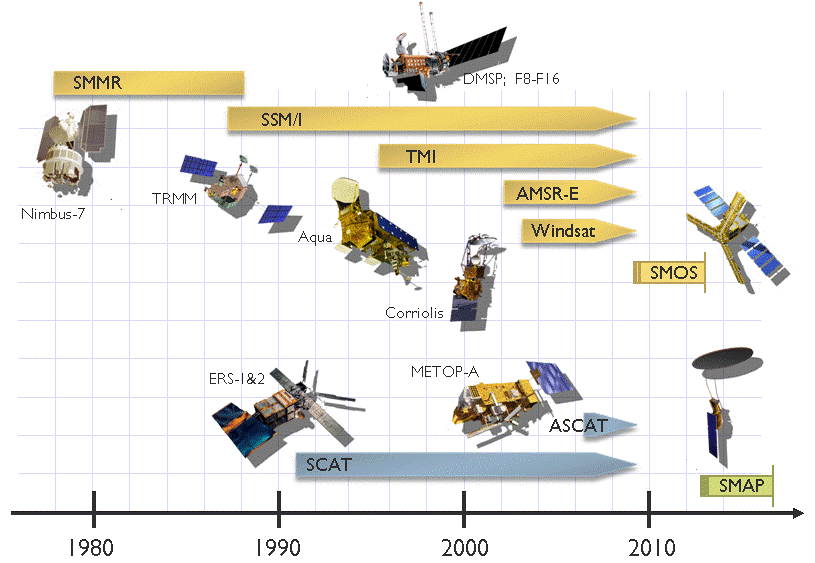
Figure 3 Microwave sensors used for generating the most complete and consistent soil moisture data record (ESA, 2022)
In the framework of MAGDA Project, soil moisture products available through Copernicus service, such as surface soil moisture and soil water index, will be assimilated into weather and hydrological models for providing severe weather alerts and irrigation advisory direct to farmers in the three pilot areas located in Italy, France and Romania.
Author Zenaida Chițu
References
[1] Laura Dente, (2016). Microwave remote sensing: Synergy of active and passive observations and validation of retrieved products, PhD Thesis, University of Twente.
[2] METER Teros 11 (2023). TEROS 11 Advanced soil moisture & temperature sensor. [Online] METER Group. Available at: https://www.metergroup.com/en/meter-environment/products/teros-11-soil-moisture-sensor
[3] Copernicus (2020). OBSERVER: Monitoring soil moisture from space with Copernicus. [online] Copernicus. Available at: https://www.copernicus.eu/en/news/news/observer-monitoring-soil-moisture-space-copernicus
[4] ESA (2022). ESA CCI Soil moisture. [online] Available at: http://www.esa-soilmoisture-cci.org/
Keywords
Soil moisture, Essential Climate Variables, remote sensing, Copernicus programme, microwave sensors, soil moisture sensors, water cycle
